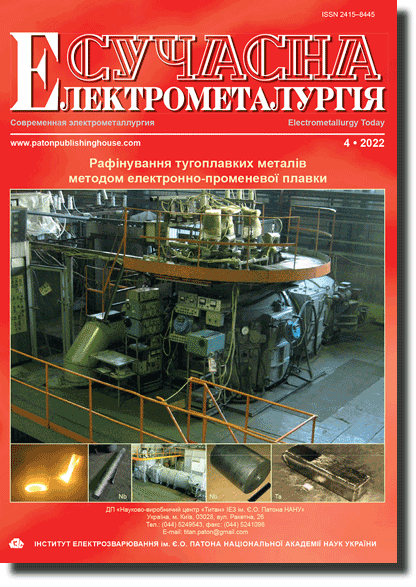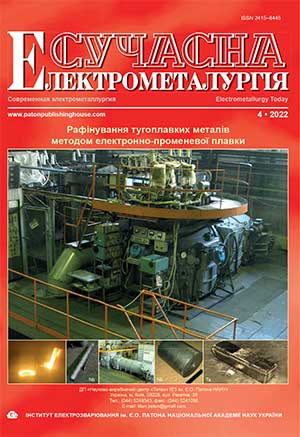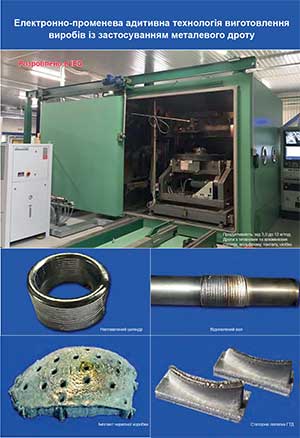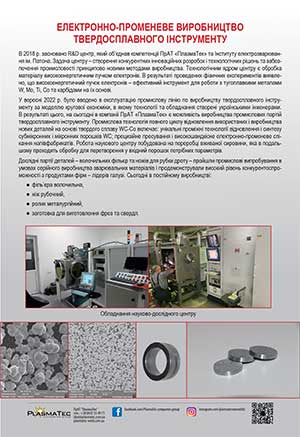| 2022 №04 (03) |
DOI of Article 10.37434/sem2022.04.04 |
2022 №04 (05) |
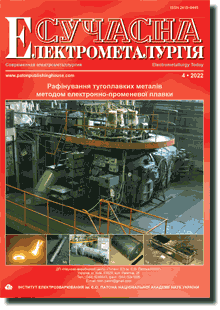
"Suchasna Elektrometallurgiya" (Electrometallurgy Today), 2022, #4, 20-26 pages
Assessment of economic effectiveness of electroslag technologies, using consumable electrode and liquid metal
G.P. Stovpchenko, G.O. Polishko, D.V. Kolomiets, L.B. Medovar
E.O. Paton Electric Welding Institute of the NAS of Ukraine. 11 Kazymyr Malevych Str., 03150, Kyiv, Ukraine. E-mail: office@paton.kiev.ua
Abstract
Comparison of energy intensity and metal losses in electroslag technologies with consumable electrode remelting and use of liquid metal was performed, which showed the energy effectiveness and higher metal yield at application of the latter. At formation of an ingot from liquid metal with the effi ciency characteristic for the traditional ESR process, the power saving is equal to 57 %. The possibility of increasing the effi ciency by 15 %, by reducing metal overheating at electroslag remelting with liquid metal without a change of the process thermal conditions and ingot quality increases the power saving to 60 % of the losses in the traditional process. Metal losses are also by 14...60 % lower due to absence of consumable electrodes that gives a signifi cant cost effect. Ref. 23, Tabl. 1, Fig. 1.
Keywords: electroslag remelting; consumable electrode; electroslag technology with liquid metal; ESR ingots; electric power; metal; cost-effectiveness
Received 15.09.2022
References
1. Paton, B.E., Medovar, B.I., Paton, V.E. (2008) New method of electric casting of ingots: Selected works. Kyiv, Naukova Dumka, 610-619 [in Russian].2. Voloshkevich, G.Z. (1953) Electroslag welding. Avtomatich. Svarka, 6, 6-10 [in Russian].
3. Medovar, B.I., Chernets, A.V., Medovar, L.B. et al. (1995) Electroslag cladding by liquid filler material. Problemy Spets. Elektrometallurgii, 1, 6-11 [in Russian].
4. Polishko, A.A. (2012) Enlargement of ingots by successive circumferential surfacing. Advances in Electrometallurgy, 10(2), 95-98.
5. Medovar, L., Polishko, G., Stovpchenko, G. et al. (2018) Electroslag refining with liquid metal for composite rotor manufacturing. Archives of Materials Sci. and Engin., 91(2), 49-55. https://doi.org/10.5604/01.3001.0012.5489
6. Li Xiaoling, Sun Wenqiang, Sun Wenqiang et al. (2018) Material metabolism and environmental emissions of BF-BOF and EAF steel production routes. Mineral Processing and Extractive Metallurgy Review, 39(1), 50-58. https://doi.org/10.1080/08827508.2017.1324440
7. Holappa, L. (2014) Secondary steelmaking. Treatise on Process Metallurgy. Vol. 3. Industrial Processes, 301-345. https://doi.org/10.1016/B978-0-08-096988-6.00012-2
8. (2014) Industrial Energy Efficiency Benchmarking Report for Iron and Steel Sector. United Nations Industrial Development Organization. https://www.unido.org/sites/default/files/ files/2019-05/Benchmarking%20Report%20Steel%20Sector.pdf
9. Mohsen, M.S., Akash, B. (1998) Energy analysis of the steel making industry. Inter. J. of Energy Research, 22, 1049-1054. DOI: 10.1002/(SICI)1099-114X(19981010)22:12<1049::AID ER422>3.3.CO;2-N https://www.researchgate.net/publication/ 298959074_Energy_analysis_of_the_steel_making_industry https://doi.org/10.1002/(SICI)1099-114X(19981010)22:12<1049::AID-ER422>3.0.CO;2-W
10. Demidik, V.N., Kolodnaya, T.P. (2010) Electric arc melting of steel as a necessary component of metallurgy upgrading of Ukraine. Metall i Litio Ukrainy, 5, 34-39 [in Russian].
11. He Kun, Wang Li, Li Xiaoyan. (2020) Review of the energy consumption and production structure of China`s steel industry: Current situation and future development. Metals, 10, 302-320. https://doi.org/10.3390/met10030302
12. Bublík, J., Abraham, M. (2011) Specific energy consumption of induction crucible furnace. Intensive Programme «Renewable Energy Sources». Železná Ruda-Špičák, University of West Bohemia. Czech Republic, 130-133.
13. Abhilash E., Joseph M.A. (2008) Studies on energy consumption of melting furnaces and energy conservation options in foundries. Conf. Energy 2008, Calicut, Kerala, India, 2018, January. https://www.researchgate.net/publication/ 292616091_Studies_on_Energy_Consumption_of_Melting_Furnaces_and_Energy_Conservation_Options_in_ Foundries
14. Chaabet, M., Doetsch, E. (2015) ABP-Inductive melting in steelworks. Messe, Düsseldorf, Germany, 16-20 June, 2015. TERMPROCESSES 2015. Heat Processing, 1, 63-68. https://doi.org/10.1111/resp.12706_6
15. Moyer, J.M., Jackman, L.A., Adasczik, C.B. et al. (1994) Advances in triple melting superalloys 718, 706, and 720. The Minerals, Metals & Materials Society, 39-48. https://doi.org/10.7449/1994/Superalloys_1994_39_48
16. Choudhury, A. (1992) State of the art of superalloy production for aerospace and other application using VIM/VAR or VIM/ ESR. ISIJ Inter., 32(5), 563-574. https://doi.org/10.2355/isijinternational.32.563
17. Kaplan, V.N., Vakula, V.S., Sadovnik, Yu.V., Yan, Kh. (2009) Implementation of automated technological complexes GOR converters for production of corrosion-resistant steels at metallurgical works of PRC. Metall i Litio Ukrainy, 1-2, 41-42 [in Russian].
18. Smirnov, A., Safonov, V. (2008) After converter and ASMF. On the modern concept of application of the technology of steel treatment in "ladle-furnace" installations. Internet-J. Metall [in Russian]. URL: https://readmetal.com/?p=1091.
19. Bolshakov, V.I., Tuboltsev, L.G. (2006) State-of-the-art and prospects of development of ferrous metallurgy of Ukraine on the base of energy-saving technologies. Metallurgicheskaya i Gornorudnaya Promyshlennost, 2, 1-8 [in Russian].
20. (1977) Steel pouring. Ed. by B.I. Baptizmansky. Kyiv-Donetsk, Vyshcha Shkola [in Russian].
21. URL:http://www.dss-ua.com/rus/company/production/rero lling-production/
22. Palamar, D.G., Razdobreev, V.G., Badyuk, S.I. (2011) Analysis of state of section-rolling production at metallurgical works of Ukraine. Fundamentalnye i Prikladnye Problemy Chyornoi Metallurgii, 23, 185-194, Dnipropetrovsk, IFM [in Russian].
23. Medovar, L.B., Lebedev, V.A., Stovpchenko, A.P. et al. (2012) Reconstruction of electroslag remelting furnaces. Advances in Electrometallurgy, 10(4), 233-237
Advertising in this issue:
The cost of subscription/purchase order journals or individual articles
| Journal/Currency | Annual Set | 1 issue printed |
1 issue |
one article |
| TPWJ/USD | 384 $ | 32 $ | 26 $ | 13 $ |
| TPWJ/EUR | 348 € | 29 € | 24 € | 12 € |
| TPWJ/UAH | 7200 UAH | 600 UAH | 600 UAH | 280 UAH |
| AS/UAH | 1800 UAH | 300 UAH | 300 UAH | 150 UAH |
| AS/USD | 192 $ | 32 $ | 26 $ | 13 $ |
| AS/EUR | 180 € | 30 € | 25 € | 12 € |
| SEM/UAH | 1200 UAH | 300 UAH | 300 UAH | 150 UAH |
| SEM/USD | 128 $ | 32 $ | 26 $ | 13 $ |
| SEM/EUR | 120 € | 30 € | 25 € | 12 € |
| TDNK/UAH | 1200 UAH | 300 UAH | 300 UAH | 150 UAH |
| TDNK/USD | 128 $ | 32 $ | 26 $ | 13 $ |
| TDNK/EUR | 120 € | 30 € | 25 € | 15 € |
AS = «Automatic Welding» - 6 issues per year;
TPWJ = «PATON WELDING JOURNAL» - 12 issues per year;
SEM = «Electrometallurgy Today» - 4 issues per year;
TDNK = «Technical Diagnostics and Non-Destructive Testing» - 4 issues per year.





